Balık ekmek (fish sandwich) is a ubiquitous “must-eat” food in any tourist-oriented feature on Istanbul. Even for the casual visitor glancing at a guidebook, it is nearly impossible to overlook. Simply consisting of grilled whitefish with raw onions and lettuce sandwiched in a half-loaf of standard white bread, and seasoned with salt, herbs, and spices with a squeeze of lemon, it’s typically identified as unmissable not just for its flavor, but as a cultural experience specific to Istanbul.
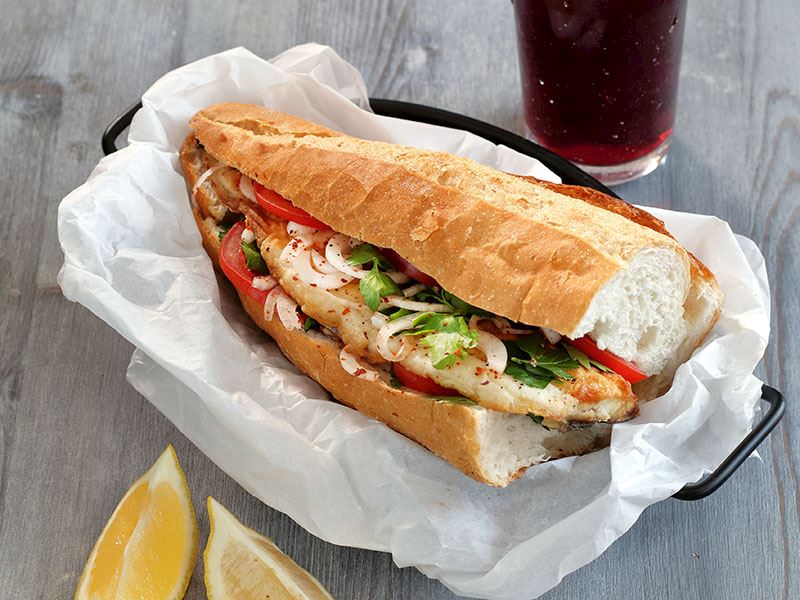
The story started on boats
Freshly grilled fish served on thick hunks of bread has been sold on the waterfronts of the Bosphorus and the Golden Horn since the mid-nineteenth century. When catch sizes were particularly abundant, fishermen set up makeshift grills on the decks of their boats to sell directly to hungry Istanbulites. It was not their primary form of income generation, but a way for fishermen to earn extra money from generous catches.
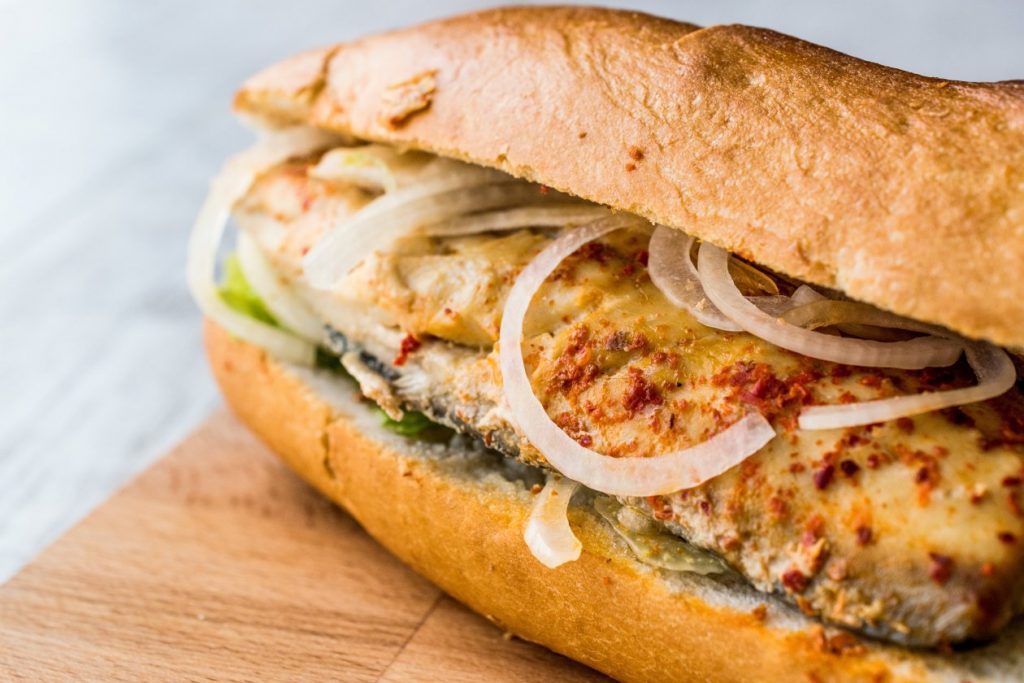
This practice could be seen in Istanbul into the 1990s in Eminönü, Karaköy, and the Bosphorus neighborhoods (themselves former fishing villages). In fact, the now-famous Adem Baba fish restaurant in Arnavutköy got its start as a modest-sized boat docked in Bebek, serving simply-prepared fish at a single ten-seater table on the boat deck, before expanding its business to a brick-and-mortar restaurant.
Since the late 1950s, Istanbul’s fish stocks and fishing industry have come under a host of pressures, including environmental damage caused by urbanization, industrialization, and coastal development, the growth of large-scale industrial fisheries contributing to overfishing, and an urban population explosion that rapidly increased the demand for food. These factors have had a striking effect on the fish population and the overall health of the city’s waterways. One result is that small-scale fishermen increasing have difficulty in making a living from fishing due to plummeting fish stocks. No longer are abundant catches grilled and sold shoreside, as fishermen struggle to make ends meet.

Urbanization and regulation
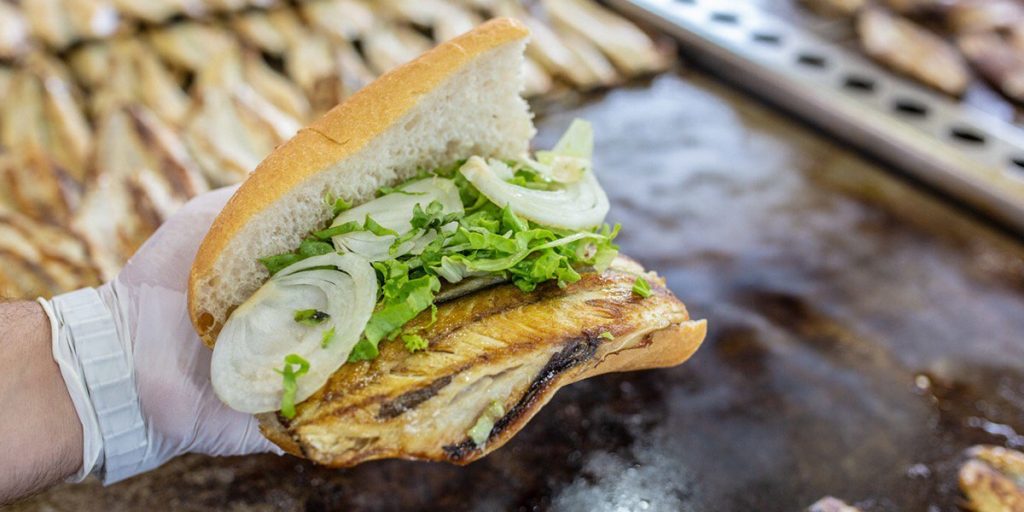
On top of considerable environmental challenges, municipal regulations have also increased in recent years. In 2004 the Istanbul Preservation Board banned balık ekmek boats from operating in Eminönü. The government’s stated reason for the ban was to prevent visual pollution, and to protect the historical and natural texture of the Bosphorus—a curious justification given the municipality’s history of landfilling large swathes of urban coastline. In 2007 Istanbul municipality granted limited tekne yeri (boat location) tenders specifically for balık ekmek boats at an annual rent rate of 52,000-55,000 TL. In order to participate in the auction, bidders were required to be members of the Istanbul Balık Satıcıları Esnaf Odası (Istanbul Bureau of Fish Sellers), and to have at least five years experience selling balık ekmek. That year only seven people were part of the bureau and eligible to bid, just four of them placed bids for boat rentals, and three rentals were granted by the municipality. These are the three elaborately decorated “Ottoman-style” boats, which now dock at the Eminönü waterfront. Unfortunately, since November 1, 2019, the last balık ekmek boats were shut down by authorities due to the new policy.
Turkish tradition, Scandinavian fish
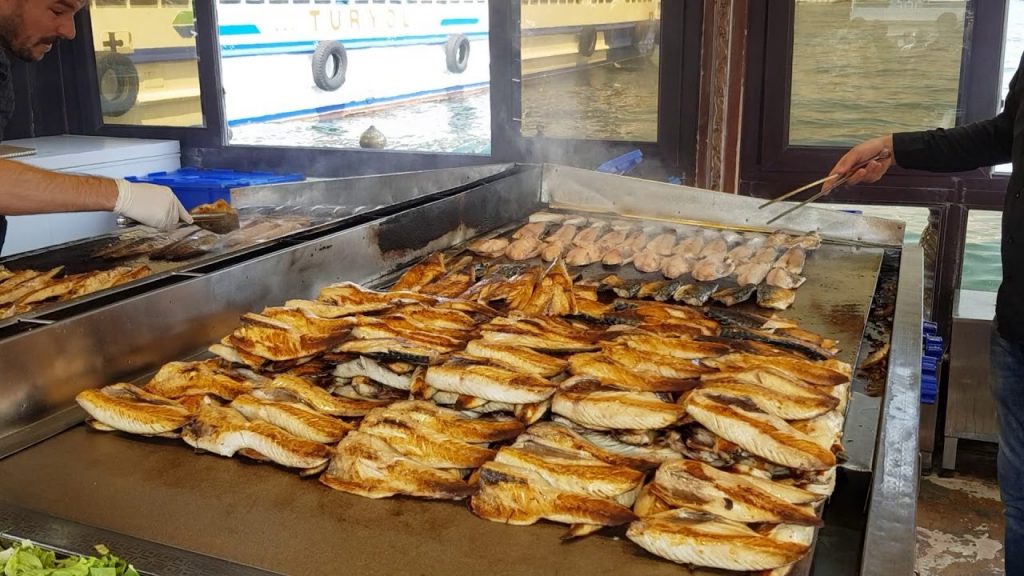
It is hardly a secret these days that, in all areas of the city, the slabs of whitefish on vendors’ grills are not pulled fresh from the Bosphorus or even from Aegean fish farms, but imported on ice from Scandinavia and sold in bulk at Istanbul’s wholesale fish market. As fish stocks have plummeted, prices for local fish have gone up. At the same time, the increased popularity of balık ekmek among tourists puts pressure on vendors to keep up with demand while maintaining a low bottom line. While it is marketed as an authentic expression of Istanbul’s culinary heritage, the fish used in today’s fish sandwich is not local, and is often neither flavorful nor particularly fresh. There is an undeniable contradiction, as this dish popularized to use excess fish in a time of abundance has now become so scarce as to require the use of foreign imports. It raises the question of whether balık ekmek can still be considered an authentic Istanbul street food.
The shift to a highly regulated balık ekmek industry has clear benefits, first among them being improved health and safety regulations for the benefit of consumers. At the time of the boats’ initial removal in 2004, there was speculation that the ban was an effort to accommodate EU sanitation regulations. At the same time it was acknowledged that the removal of private boats, which had previously been operating without licenses (though most did have docking permits) both cleared up public shorefront access and generated income for the city in the form of permit fees.

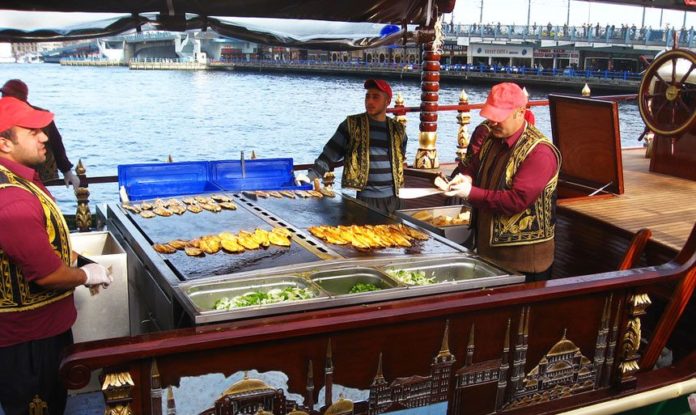
On the other hand, the elimination of independent balık ekmek boats and the concentration of select numbers of licensed vendors in the highly touristic area of Eminönü arguably demonstrates a monopolization and capitalization of street food traditions. This does damage to the cultural legacy of the waterfront—in exact contradiction of the municipality’s goal of protecting the city’s historical integrity. Not only that, but it deprives Istanbul residents, especially lower-income ones, of an inexpensive meal option if they are not living or working in the vicinity of Galata. What was once a low-cost meal for local people, which could be purchased in many waterfront areas, has become a tourist attraction.
Whose fish sandwich?
Looking at today’s famous fish sandwich from this perspective, we can also see a manipulation of history. While in one sense it represents a continuity with earlier periods, there is also a co-opting of the modest, workaday roots of the fish sandwich trade. A simple food sold by fishermen directly to local working people has been replaced by a nostalgic fantasy-version of the past in the form of “Ottoman-style” boats in Eminönü, presented as historic. There is evidence that the kitchens in Topkapı may indeed have purchased fish for the palace table directly from fishermen, but the sultan certainly never set up business plying sandwiches to civilians from gilded boats.
The popularity of balık ekmek is evidence that Istanbul’s local culinary history has the potential to spark tourist interest, but the way it currently operates is in some ways problematic. The challenge will be to develop a form of heritage tourism that benefits local small-scale fisheries while encouraging the revitalization of Istanbul’s seafood culture. While issues of authenticity are worth questioning, it is undeniable that balık ekmek is a tangible part of the city’s history—one worth fighting for.











